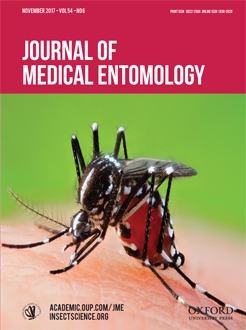Tick and mosquito management is important to public health protection. At the same time, growing concerns about declines of pollinator species raise the question of whether vector control practices might affect pollinator populations. We report the results of a task force of the North American Pollinator Protection Campaign (NAPPC) that examined potential effects of vector management practices on pollinators, and how these programs could be adjusted to minimize negative effects on pollinating species. The main types of vector control practices that might affect pollinators are landscape manipulation, biocontrol, and pesticide applications. Some current practices already minimize effects of vector control on pollinators (e.g., short-lived pesticides and application-targeting technologies). Nontarget effects can be further diminished by taking pollinator protection into account in the planning stages of vector management programs. Effects of vector control on pollinator species often depend on specific local conditions (e.g., proximity of locations with abundant vectors to concentrations of floral resources), so planning is most effective when it includes collaborations of local vector management professionals with local experts on pollinators. Interventions can then be designed to avoid pollinators (e.g., targeting applications to avoid blooming times and pollinator nesting habitats), while still optimizing public health protection. Research on efficient targeting of interventions, and on effects on pollinators of emerging technologies, will help mitigate potential deleterious effects on pollinators in future management programs. In particular, models that can predict effects of integrated pest management on vector-borne pathogen transmission, along with effects on pollinator populations, would be useful for collaborative decision-making.
How to translate text using browser tools
8 August 2017
Management of Arthropod Pathogen Vectors in North America: Minimizing Adverse Effects on Pollinators
Howard S. Ginsberg,
Timothy A. Bargar,
Michelle L. Hladik,
Charles Lubelczyk
ACCESS THE FULL ARTICLE
It is not available for individual sale.
This article is only available to subscribers.
It is not available for individual sale.
It is not available for individual sale.

Journal of Medical Entomology
Vol. 54 • No. 6
November 2017
Vol. 54 • No. 6
November 2017
conservation
Culicidae
IPM
Ixodidae
vector-borne pathogen




